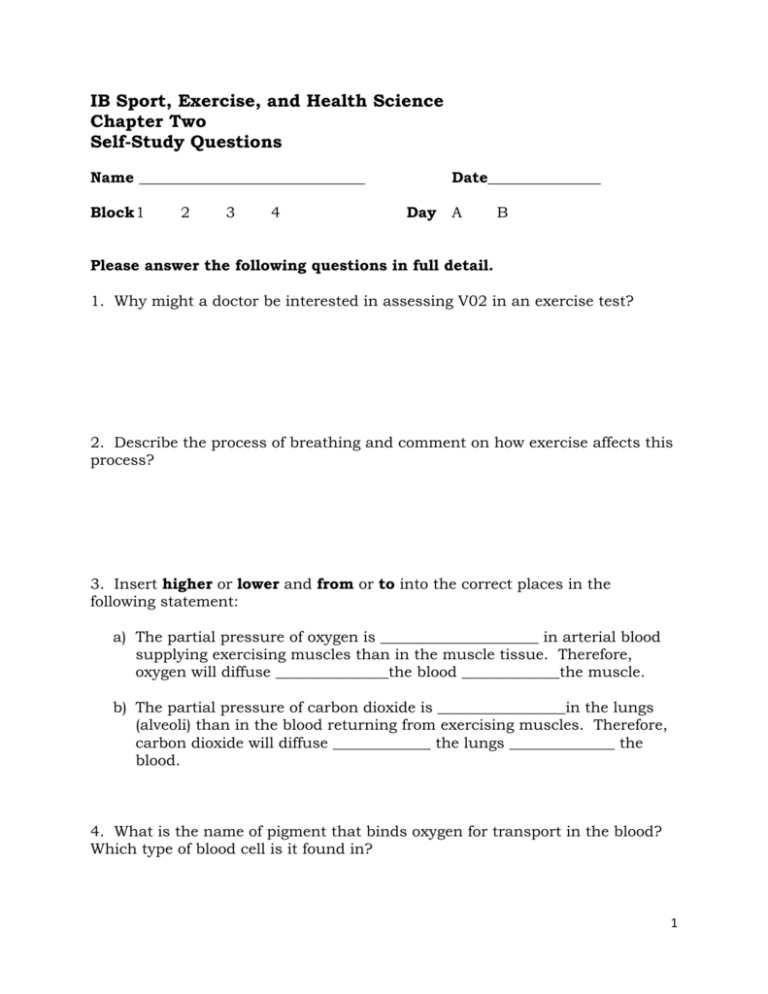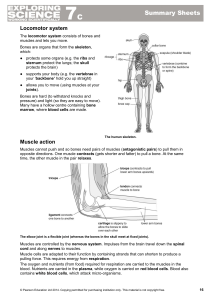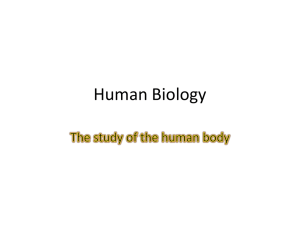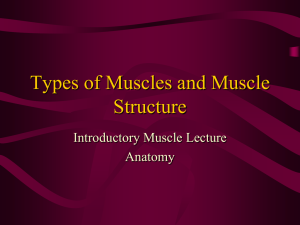IB Sport, Exercise, and Health Science Chapter Two Self
advertisement

IB Sport, Exercise, and Health Science Chapter Two Self-Study Questions Name ______________________________ Block 1 2 3 4 Date_______________ Day A B Please answer the following questions in full detail. 1. Why might a doctor be interested in assessing V02 in an exercise test? 2. Describe the process of breathing and comment on how exercise affects this process? 3. Insert higher or lower and from or to into the correct places in the following statement: a) The partial pressure of oxygen is _____________________ in arterial blood supplying exercising muscles than in the muscle tissue. Therefore, oxygen will diffuse _______________the blood _____________the muscle. b) The partial pressure of carbon dioxide is _________________in the lungs (alveoli) than in the blood returning from exercising muscles. Therefore, carbon dioxide will diffuse _____________ the lungs ______________ the blood. 4. What is the name of pigment that binds oxygen for transport in the blood? Which type of blood cell is it found in? 1 5. Draw and label the four chambers of the heart, including the valves. 6. List the names of the specialist cells found in the heart that generate and then relay the electrical signal that causes the heart to contract. 7. Explain what will happen to the smooth muscles in the arterioles and capillaries within active muscle, compared to within the kidney during exercise. 2 8. Describe the response of the heart rate, stroke volume and cardiac output during exercise. 9. Define V02max and discuss why it is considered to be of functional importance from a health and sports perspective. 10. How does aerobic training increase V02max? 11. Review Data Based Question on page 49. 3











